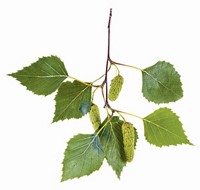Advertisement
Grab your lab coat. Let's get started
Welcome!
Welcome!
Create an account below to get 6 C&EN articles per month, receive newsletters and more - all free.
It seems this is your first time logging in online. Please enter the following information to continue.
As an ACS member you automatically get access to this site. All we need is few more details to create your reading experience.
Not you? Sign in with a different account.
Not you? Sign in with a different account.
ERROR 1
ERROR 1
ERROR 2
ERROR 2
ERROR 2
ERROR 2
ERROR 2
Password and Confirm password must match.
If you have an ACS member number, please enter it here so we can link this account to your membership. (optional)
ERROR 2
ACS values your privacy. By submitting your information, you are gaining access to C&EN and subscribing to our weekly newsletter. We use the information you provide to make your reading experience better, and we will never sell your data to third party members.
Environment
Dust Removes Ozone From Indoor Air
Squalene and cholesterol, as major components in dust, react with ozone to help remediate household air
by Celia Henry Arnaud
May 16, 2011
| A version of this story appeared in
Volume 89, Issue 20

The squalene and cholesterol that are major constituents of dust found in a test of Danish homes and day-care centers could lessen the amount of potentially harmful indoor ozone, Charles J. Weschler of the University of Medicine & Dentistry of New Jersey and coworkers report (Environ. Sci. Technol., DOI: 10.1021/es103894r). The presence of squalene, which is the most abundant skin-surface lipid, indicates that human skin flakes are a significant fraction of the settled dust in these settings. The amount of cholesterol found indicates that cooking emissions also contribute significantly to indoor dust. Both compounds react with ozone and therefore help remediate indoor air. “If squalene in dust redistributes to other indoor surfaces, it may make an even larger contribution to the removal of indoor ozone than we estimate,” Weschler says. Some of the oxidation products, however, could be irritants. “What one person sheds may be an allergy trigger or source of harmful microbes for someone else,” Weschler notes. This study is a “potent reminder that humans leave a part of themselves in the settings they occupy.”






Join the conversation
Contact the reporter
Submit a Letter to the Editor for publication
Engage with us on Twitter